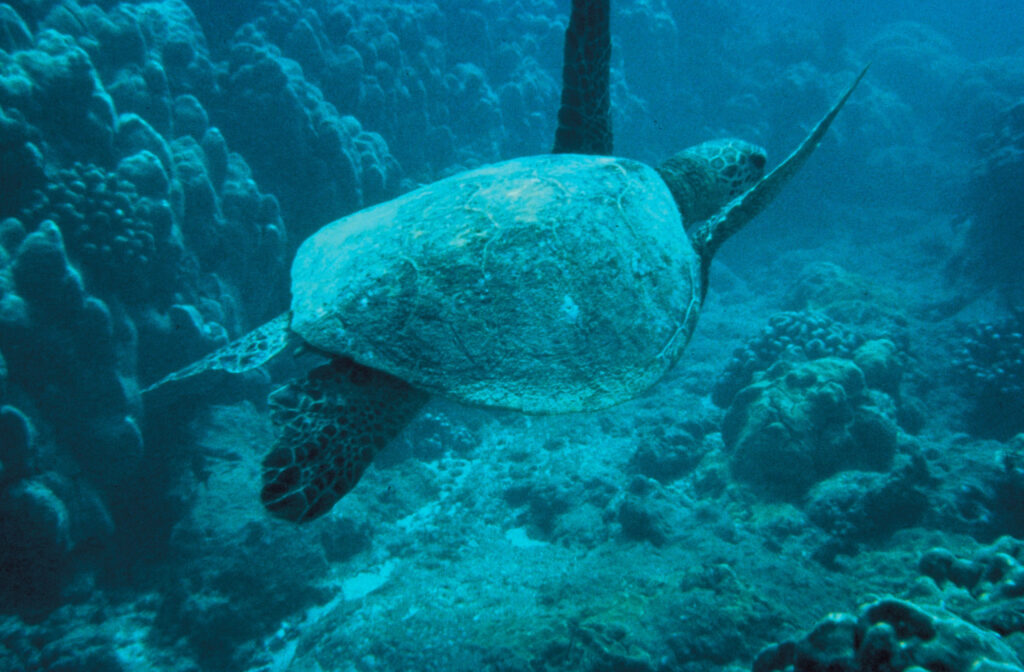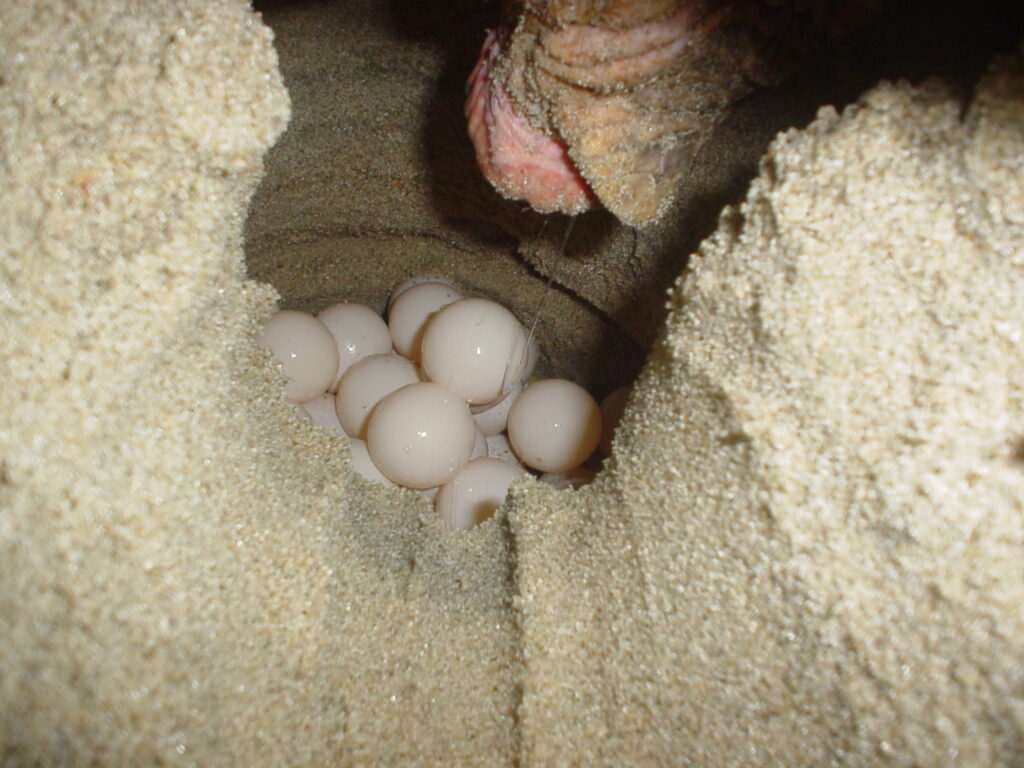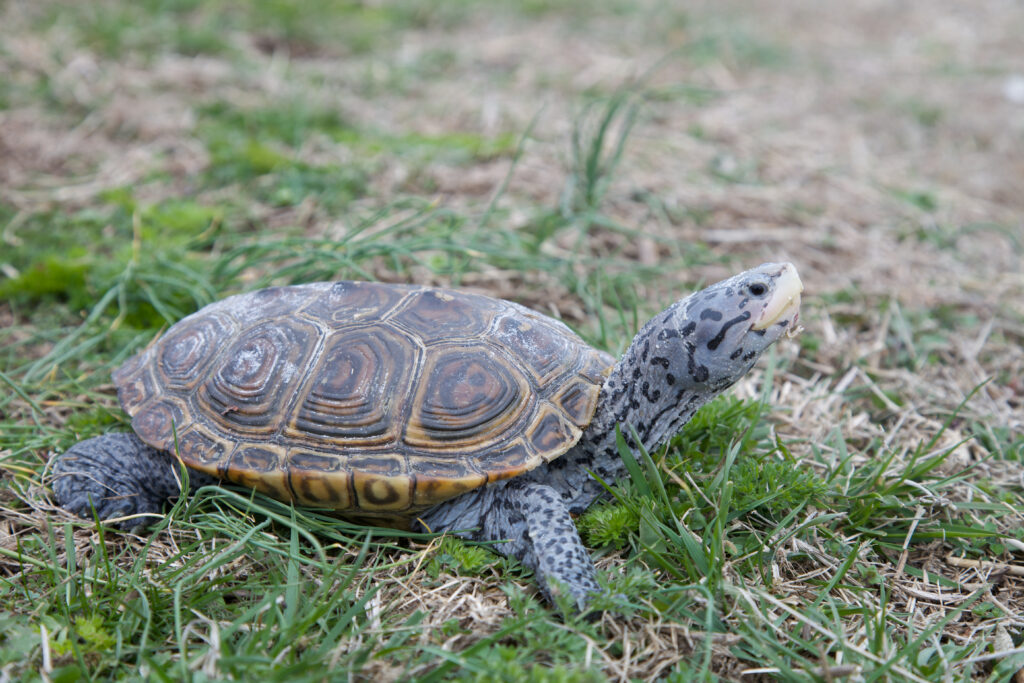How the Turtle Got His Marks
By Bertie Lee Hall (age 10)
Annotations by josh benjamin

MAY was a very pretty brown skinned girl, just as loving, kind and thoughtful as she could be. She lived in a large city with her father and mother. One day when she was on her vacation in the country, which was near the sea, she saw a large turtle basking on the sand in the warm sunshine. May thought how nice it would be to know about him. So she went up to him and said timidly, “Good morning, Mr. Turtle.”
And to her surprise he answered gruffly, “Good morning.”
May softly told him her wish.
“Well,” said he, “I don’t generally tell everybody about my affairs, but as you seem to be a nice girl, I will tell you. I live here all the time, and I think it is very pleasant to bask in the warm sun, and if it’s too hot I can swim into the cool depths of the sea.”
“Where is your wife?” asked May.
“You can just see her back from here,” said Mr. Turtle.
“What is she doing?”
“She is laying eggs, and we will soon have some little ones.”
“Laying eggs!” exclaimed May. “I didn’t think anything laid eggs but our hens and the Easter Rabbit.”
“Well something else does,” said he.
“Why doesn’t she lay them in the water?” asked May.

Public Library of America.
“You see,” said the turtle, “they need the warm sunshine to hatch them; besides the large fish would eat them in the water.”
“Why does she put them in the sand?”
“That is to hide them from the land animals who wish to eat them.”
May chatted with the turtle for a long time and as they talked the sky grew dark and a shower seemed approaching. But May paid no attention to that, she kept on talking to the turtle until a drop of rain fell on her head reminding her that she had some distance to go home. So she turned to bid the turtle goodbye, but on looking back she saw only Mr. Turtle’s back for he was swimming away as fast as he could. May too ran home as fast as she could, and luckily for her it did not rain hard.
The next day when she saw the turtle she asked him why he ran away so suddenly the day before when it began to rain.
“Oh!” said he, “that is a story I can tell you.”
“Please do!” May begged full of curiosity.
“Once, long ago, the king of turtles was basking in the sun when suddenly the sky became dark and the wind blew so fiercely that the waves ran very high upon the beach. There was a great noise and something from above fell upon his back and cracked it. All turtles bear those marks unto this day.”
“Oh, they are pretty,” said May, “but I’m glad they don’t hurt until this day.”
“I’m glad they don’t too,” said the turtle, “but the king to keep his subjects from being killed passed a law, saying that all turtles and their relatives should always look up and get home whenever anything begins to fall from above.”
“He was very wise,” said May. “I believe I will go.”
“All right,” said the turtle, “and if you see my cousin the terrapin, tell him to remember the great command and always look up.”

“I will,” replied May.
Mr. Turtle gave his tail a flip and swam away. May picked up a few bright colored shells and went home, thinking of the turtle’s back and wondering if Mrs. Turtle knew her little ones from all the rest.
Hall, Bertie lee. “How the turtle got his marks.” The Brownies’ Book 1, No. 8 (August 1920): 236.
Contexts
This story, while it mythologizes the origins of the turtle’s shell markings, also teaches accurate natural history of sea turtle egg laying.
The various species of sea turtles continue to be in danger of extinction. Their current status is tracked under the U.S. Endangered Species Act and the global International Union for Conservation of Nature’s Red List, with most listed as either threatened or endangered. At the time of this edition of The Brownies’ Book, turtle soup was a delicacy, which spurred both fishing and canning of turtles. According to a 1993 NOAA paper [1], California alone imported from Mexico 255,000 pounds of turtle in 1919 and 77,000 pounds in 1920. A 1912 article from The Museum News [2] on the turtle industry in Key West, Florida, claimed that “the chief market for sea turtles in the United States is found in this port,” and that “constant persecution has so reduced the number of green turtles in Florida waters that the markets now depend chiefly on the West Indies and Mexico for their supply.”
The Endangered Species Act, passed in 1973, aims to identify animals and habitats that are in danger and help to recover them before extinction. For turtles listed as endangered, it is illegal to harm or kill them or their eggs and to import, sell, or transport turtles and turtle products. There are also additional state laws to protect nesting sites and habitats where they are common. Despite these laws, there are still instances of illegal sea turtle trade. Fortunately, there are many groups who are raising awareness of the dangers that threaten turtle species and that work to protect turtle populations.
Resources for Further Study
- Article about turtle soup and conservation
Contemporary Connections
Turtle conservation resources:
- Sea Turtle Conservancy
- See Turtles
- Oceanic Society
- What Can You Do to Save Sea Turtles
- U.S. Endangered Species (reptiles)
- IUCN Red List (sea turtles)
[1] Eckert, Karen L. “The Biology and Population Status of Marine Turtles in the North Pacific Ocean,” January 1, 1993. https://repository.library.noaa.gov/view/noaa/6133.
[2] Engelhardt, George P. “The Turtle Market At Key West.” The Museum News (Brooklyn Institute of Arts and Sciences) 7, no. 5 (1912): 73-74. Accessed November 2, 2020. http://www.jstor.org/stable/26461255.